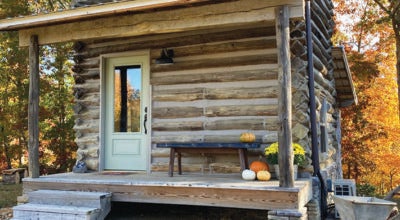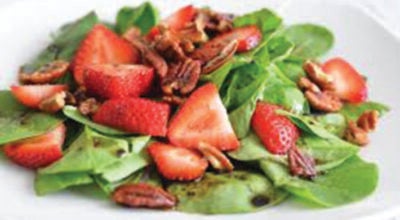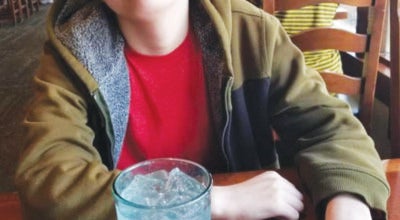The Literary Corner: Renegade Writer’s Guild
Published 9:03 am Friday, November 29, 2019
|
Getting your Trinity Audio player ready...
|
“More Civil War Soldiers”
By Linda H. Barnette
Since I love history and genealogy, I decided to try to find out how many of my eight great-great-grandfathers actually fought in the Civil War. I knew already that two of them had been soldiers because I had already written about them. During my research for this project, I found four more. Of the eight, one was too old and another one too young. My main sources were the North Carolina Troops books and two other locally written books, a roster of Davie County troops and also one for Davidson County troops.
First, was my grandfather Smith’s grandfather, William Harden Smith, who was born in 1836 in the Farmington area of Davie County. He married Phebe James in 1856, and they had 6 children, including my grandfather’s mother, Rachel. William enlisted in the Confederate Army when he was 27 years old and was a private in Company F, 42nd regiment of North Carolina troops. Pension records indicate that he was wounded in his right hand in 1865, shortly before he was paroled. He lived until 1919 and is buried in the Bethlehem United Methodist Church Cemetery, where his tombstone lists his service.
Another family member, James Ledbetter Bowles, whose name is incorrectly listed in the N.C. Troops book as James L. Bolds, was my great-great-grandfather who married Jerusha Jacobs in 1850. They were the parents of my great-grandmother, Lovie Belle Bowles Dwiggins. James enlisted in Davie County on March 18, 1862 when he was 28 years old, as a private in Company F, 42nd Regiment , North Carolina troops. There is no record of any particular war events involving him, and he was paroled at Greensboro, NC on May1, 1865 and came home to farm in the Mocksville district as he had done before the war. He died in 1909 and is buried at Center United Methodist Church Cemetery, where many of my family rest.
Newberry Potts was my Grandmother Hartley’s grandfather. Born in 1843 to William and Sarah Potts, he was also a private in company E of the 42nd regiment of NC troops. Before the war, he worked for his father, who was a cooper, in the Fulton district of Davie County. Newberry enlisted at age 18 in 1862, was paroled at Salisbury on June 5, 1865, and took the Oath of Allegiance there as well. He married Edie Ann Carter in 1868, and they had 4 children, one of whom was James Potts, my great-grandfather. Newberry died in 1920 and is buried at Fork Baptist Church. His brother, Hiram, also served in the army and returned home safely.
The last one here is John Henry “Bud” Young, born in 1830 in Davidson County, NC. He married Eliza Brooks in 1850 and had 7 children, one of whom was my great-grandmother, Eliza Young Hartley. John was commissioned as a second lieutenant in the 66th Regiment of the North Carolina Militia. However, he apparently left the militia and served in the Home Guard. A March, 1864 letter about him from Lt. Colonel Jesse Hargrave reads: “Tell Mr. J. H.Young he is not exempt and must report for service in your Home Guard.” I did not find him listed in the North Carolina Troops book, but I found him in a book by Joshua Howard called “Forgotten Heroes: Davidson County, North Carolina and the War Between the States.” What Howard did was to locate where Civil War soldiers were buried in his county. Not surprisingly, John Henry Young is buried in the Sandy Creek Lutheran Cemetery in Tyro, North Carolina, where many of my other family members are interred. He died in 1908, and his service in the Confederate Army is listed on his tombstone. It reads as follows: “CSA Veteran Second Lieutenant, Reeds District 66th Regiment NC Militia and in Lt Colonel Hargrave’s Home Guard” as well as listing his name as 2 LT John Henry “Bud” Young, Jr.
Although none of these men were killed or severely wounded, I can only imagine the disruptions in their lives by being taken away from their families and their homes for several years. None of these people were wealthy or owned slaves, yet they obviously felt the call of duty to their country. All wars require great sacrifice.
“Thanks Giving”
By Julie Terry Cartner
Sighing, Marne gazed out the window. Happy Thanksgiving, she thought. Right. Here she was, 74 years old, widowed, and her children were far away. She knew there would be no surprise visits. Her son, Derek, married with two small children, worked more hours than he should and would only get the one day off. As he lived almost 10 hours away, there was no way he could come home and get back to work on Friday. Her daughter, Kelly, a more possible four hours away, had called to say that her youngest, Jen, had a stomach bug, and there was no way she could put her in a car in that condition. Marne understood, actually agreed with the decision, but it didn’t make celebrating this family time alone any easier on her heart.
She had always loved Thanksgiving. Just the name alone was something to love. A holiday to celebrate Thanks. A holiday to celebrate Giving. What could be better than that? She thought back to her younger self, when her home was filled with love and laughter, the joy of family and friends, the delicious aromas of cooking turkey, gravy, sweet potatoes and stuffing, combined with the tangy smell of cranberry relish. And, oh, the desserts, the sweet scents of pecan pie, pumpkin rolls and some Jell-O concoction that Aunt Mabel always brought. Why did she put celery in it, Marne always wondered. And then there was Uncle Bob, always insisting on putting the football game on the television, then falling asleep before the opening kick-off.
Laughing, she pictured her cousin Ted with his mismatched socks, and Ruthie who always had some improbable hair color, and, thinking way back. Grandma Jeanne who always wore an apron until everyone was seated at the table, then whipping it off before she sat down to join everyone – even though she didn’t do any of the cooking. Mom, Dad, her sisters Barbara and Kathy and her brothers, Paul and Jim, now all gone. She had always loved being the youngest, until she was the only one left. So many years of family, now gone, and of course, the “strays” who had always been invited, Bob’s friend Steve, a widower, Barbara or Kathy’s roommate or current boyfriend, Paul’s friend on the swim team, too many to count, but over the years, there had always been many extra seats filled at the table.
The tradition continued when she and her husband and children celebrated the holiday at their house. There were always more than just the four of them. Dear Ms Hilda who lived down the street, kindly Mr. Roger, their postman, and often several friends of her children who, for one reason or another had no Thanksgiving meal at their homes. How had it happened, she wondered? How could so many years of a house overflowing with family and friends become an empty house of one? Sighing, she looked at the turkey on the counter. Why had she even bought one? Of course, she had expected Kelly and her family to come. Sighing, she looked at the clock. At almost noon, it was time to either throw the turkey out or cook it. Much to practical to do the former, she got to work, washing, then stuffing the big bird, and then she covered it in her grandmother’s enamel baking pan, and put it in the oven. She’d prepared everything else the night before, so with hours to fill, she decided to walk around the neighborhood.
Then with a bolt of inspiration, she knew what to do. Chiding herself for her former pity party and self-centeredness, she quickly went out to look for strays. Sure enough, her neighbor, Sam, had no Thanksgiving plans, and he had a friend who didn’t either. The Veteran who often wheeled himself to the corner to watch traffic had no plans and his caregiver would be hungry also. One by one, Marne gathered in those like her who were alone and created her own Thanksgiving family. When they all assembled for dinner that night, Marne gave thanks that she had remembered the holiday was one of giving. A family, she thought, can have many definitions.
“From Whom All Blessings Flow”
By Stephanie Williams Dean
One morning this week, I woke up to the words, “From whom all blessings flow.” I kept repeating the phrase, and it wasn’t long before I realized those were the words to a doxology I repeatedly sang as a child growing up in the Methodist church, “Praise God From Whom All Blessings Flow.”
The word, doxology, comes from the Greek words, doxa, which means glory, splendor, or grandeur and the word, logos, meaning word. A doxology is a short hymn of praise to God. How timely that phrase would come to me as I’d been thinking of what words I might deliver at Thanksgiving.
This common doxology was written in 1674 by Thomas Ken, a priest in the Church of England. The words to this common doxology are, “Praise God from Whom all blessings flow; Praise Him, all creatures here below; Praise Him above, ye Heavenly Host; Praise Father, Son, and Holy Ghost. Amen.”
Interestingly, the word “doxology” is not found in the Bible. However, the themes of the doxology are related to scripture. The foundation of Christian worship has always been praising God for His blessings, the glorification of God, and the affirmation of the Trinity.
So while it might seem obvious to thank God for our many blessings at the Thanksgiving holiday, some might be surprised to learn that often, His name might not be mentioned at all – and even in a Christian home. However, it’s not just about thanking God for our smallest blessings.
Thanksgiving is also a time for the glorification of God. Give thanks and glorify Him by recognizing God for His omniscience, or infinite knowledge of our lives, His omnipotence, or almighty power over our lives, and His omnipresence, or constant presence in our lives. Our greatest blessing is Christ, our Redeemer and Saviour. And we must always recognize His magnificent gift of the power through the Holy Spirit within each of us.
So this Thanksgiving, do praise Him from whom all your blessings flow.
“Sneaky Snake”
By David R. Moore
On a hot September afternoon, I opened the garage door. I was going to fill a hummingbird feeder with a solution of sugar water. As I stepped past the car, I saw a black snake on the driveway slithering straight for the opening.
I immediately felt my flight or fight response kick into high gear. I have read that this is a physiological action that occurs in response to a perceived threat. Researchers determined the brain has an engrained response to the serpentine shape. The response begins deep in the brain in the area called amygdala and triggers a cascade release of assorted hormones or chemical messengers. These chemicals increase heart and lung rates, increase blood flow to muscles, increase blood sugars and fats in order to supply the body with extra energy, and increase muscle tension in order to provide the body with extra speed or strength.
My initial instinct was flight, but then my rational brain realized the black snake was traveling towards the garage. I did not relish the idea of a snake residing in the medley of lawn mowers, half-filled paint cans, dusty tool boxes, storage containers filled with unknowns, and thousands of other items carefully squeezed along the walls. Bravely (a word I use with hindsight and wanting to sound like I was manly) I jumped between the snake and the back of the car. The snake did a quick 180 degrees and scurried under the other car parked in the driveway.
I reasoned the snake was traveling on into the nearby woods. Feeling a little victorious, I continued my journey around to the side of the house toward the hummingbird feeder. For some reason, I stopped and decided I should look under the other car to ensure the snake had indeed gone on his way into the woods. As I came around the corner, I saw the snake heading toward the garage.
I ran and again blocked his path. He stopped and gave me a look of pure irritation and then, with great speed, zipped into the row of bushes juxtaposed to the house.
I think the black snake was an eastern racer. These snakes live all across the United States. Their coloration is black with a light-colored underbelly. These non-poisonous snakes are fast moving and most active during daylight hours. They live on a diet of frogs, lizards, small rodents, insects, moths, and other snakes. They are known to climb trees and rob bird nests of eggs and young. They are a curious snake with excellent vision, often raising their heads high to view what is around them.
I could say that this snake was at least 7 feet long and as big around as a wrestler’s arm, but in reality, it was 4 to 5 feet in length with a much smaller girth. I do look for the snake every time I open the garage. I am sure he is out there watching and waiting for the right time to sneak into that abode.
• For more information on Renegade Writers Guild, visit www.renegadewritersguild.wordpress.com.
• Submit a favorite memory of life in Davie County. Story should be typed and not more than 250 words. Please include your name and phone number or email address. RWG retains reprint rights. Email to lhb1@yadtel.net.





